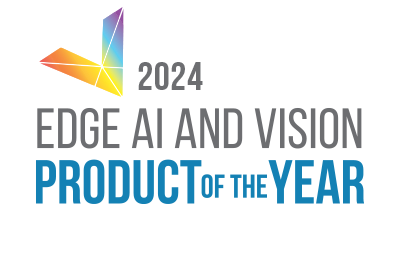2024 Edge AI and Vision Product of the Year Awards
For enabling technologies
Details
- Open exclusively for Alliance Member companies
- Four categories for enabling technologies: Processors, Software and Algorithms, Cameras and Sensors, Developer Tools
- Entries for multiple products and categories are encouraged
- Winning entries are chosen by an independent panel of judges
- Per entry fee: $695
- Deadline for submissions: Dec 31, 2023
- Awards ceremony: May 22, 2024 at the Embedded Vision Summit
Eligibility
- Company must be an Alliance Member
- Product is an enabling technology in one of the four product categories
- Products must have been first delivered in 2023
- If product is IP, then product must have been first delivered to your customer in 2022 or 2023
- Company must be the primary developer of the product being submitted
Entry Benefits
- Validation of your product leadership and innovation
Judging by a panel of independent industry experts
- Validation of your product leadership and innovation
- Year-round promotion by the Edge AI and Vision Alliance
Alliance home page and dedicated showcase page
Press releases, social media and presentations
Alliance newsletters with global distribution
Awards ceremony at the Embedded Vision Summit
- Year-round promotion by the Edge AI and Vision Alliance
- Collateral to promote your winning product
Award ceremony video, winner graphic and trophy
- Attend the Embedded Vision Summit, May 21-23, 2024
Two free passes to attend the Embedded Vision Summit
One invitation to attend the Executive Networking Reception
- Collateral to promote your winning product
With all of these promotional opportunities, the return on investment for submitting an entry is off the charts! The winner for each category will hold the Edge AI and Vision Product of the Year Award title for a year, so you will enjoy many opportunities to reap the promotional benefits!
Judging Criteria
Edge AI and Vision Product of the Year Award winners are selected by an independent panel of judges, based on the following criteria:
- Innovation. Describe your product, highlighting your innovation and unique features.
- Differentiation. How does your product compare to the closest competitor?
- Customer Impact. How does your product create new value for your customers? What does your product enable your customers to do that they could not do previously?
- Market Impact. How has your product been received in the market? Provide links to press coverage, market research reports, customer usage, interviews, etc.
What is Edge AI and Vision?
“Edge AI and vision” refers to the practical use of artificial intelligence and computer vision in machines that perceive and understand their environment through visual and other means. By “edge AI,” we mean AI processing that occurs locally, whether on a chip, device or on-premise. We include hybrid approaches where some processing happens locally and some in the cloud. And we include edge devices that process all sorts of sensor data: images, audio, vibration, radar, lidar and the like.
Examples of edge AI systems include a warehouse robot using cameras and lidar, a smart speaker with local wake word processing, an on-premise video recorder with object detection and tracking, and a radar-based hospital patient monitor that uses AI to detect breathing, movement and sleep. By “computer vision” we mean the use of algorithms and AI to extract meaning from images or video. Examples include motion and object tracking, defect detection (e.g., on an assembly line), pedestrian detection for automobiles, and location recognition and mapping from visual inputs.


